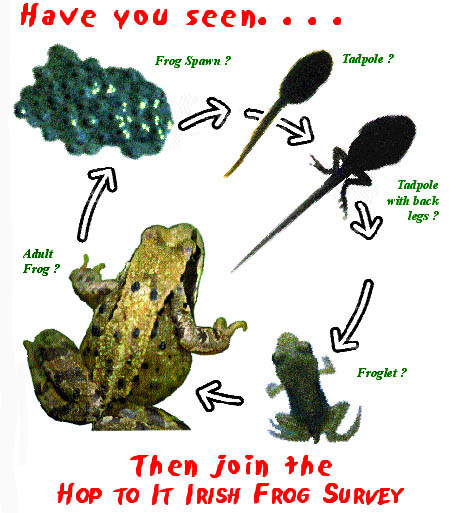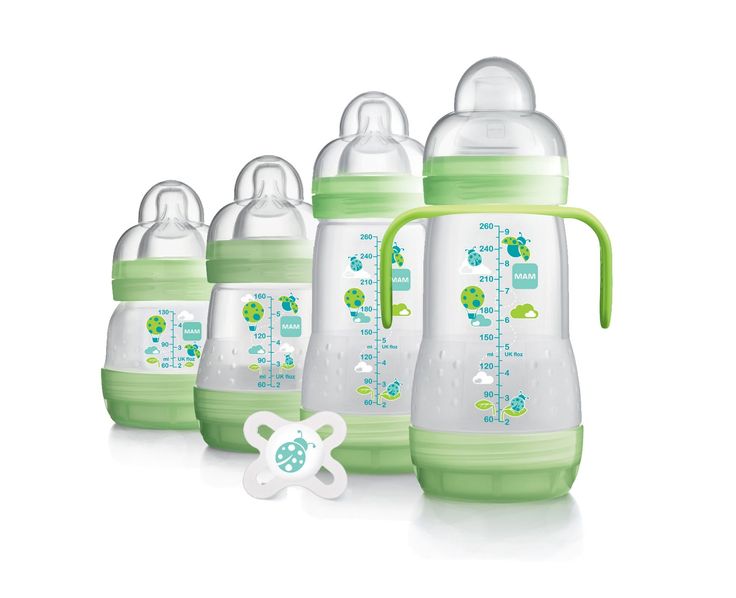What to feed baby frogs and tadpoles
Tadpole to Frog Kit Directions
Welcome To Live Frog Growing KitWARNING: CHOKING HAZARD — Small parts. Not for children under 3 years
Congratulations: You are about to watch part of the incredible life cycle of a leopard frog! Expect the change from tadpole to frog to take approximately 12-16 weeks. The resulting frogs can live 5 years or more in captivity.
Changing from Tadpole to Froglet to Frog
Expect the change from tadpole to frog to take approximately 12-16 weeks. This change is called ‘metamorphosis.’ First, back legs will emerge from the tadpole. Gradually the tadpole will develop lungs and you’ll see some changes to the tadpole’s head like elevated eyes and a wider mouth. When the tadpole’s front legs develop it will stop feeding on tadpole food and its tail will begin to shrink. At this time it will start climbing partially out of the water. A tadpole that has front and back legs but still has a tail is called a “froglet. ” A froglet may stop eating tadpole food but not be ready to eat adult frog food yet. The froglet will get its nourishment from its tail as the tail is absorbed into its body. When the tail totally disappears it is now considered an adult frog and ready for it’s first frog meal.
Important: If the tadpole is slow to develop- feed more often; change the water more often; and/or place the habitat in a warmer area. Tadpole growth is directly related to the number of complete water changes you do.
When Your Tadpole Arrives
Your tadpole is a leopard frog tadpole. It looks like a little fish and lives entirely in the water.
These tadpoles need 1 gallon of water each so if you are providing your own habitat make sure it is large enough for your tadpole. If you ordered our complete kit with a habitat then you have the correct size. To prepare your habitat fill it around ¾ full of warm (not hot) tap water. Read the instructions on the water treatment so you add the correct amount. Add the water treatment solution into the water and stir. This step is very important because water can contain chemicals that are dangerous to tadpoles.
Add the water treatment solution into the water and stir. This step is very important because water can contain chemicals that are dangerous to tadpoles.
Before putting the tadpole in the habitat, let the treated water sit for at least 2 hours. This allows the water to become the same temperature as the water in the tadpole’s transport bag. After 2 hours, you can open the bag the tadpole came in and pour the entire contents into the habitat. Don’t be worried if there is no movement at first, it can take up to a day before the tadpole explores the habitat.
Important: Keep your habitat at room temperature (65 to 78 degrees F) and out of direct sunlight. Do not shake or tap on the habitat, as this is stressful for the tadpole.
Caring for Your Tadpole
FEEDING: The tadpole may not eat the 1st day in the habitat as it adjusts to its new home. The tadpole eats the tadpole food included with the kit. We have included all the food the tadpole will need. Tadpoles are vegetarians and in the wild they eat bits of algae and plants. Our tadpole food is great for them and will not decay or foul water as quickly as leafy foods. As it grows, the tadpole will need to eat more food. Start by feeding it one pellet of food, which should last about 3 days. You will need to increase the frequency you give the tadpole a food pellet as it grows. It is important not to overfeed the tadpole because left over food will decay and having dirty water will harm the tadpole. If you run out of food or misplace it, tadpoles love goldfish food from the local pet store.
Tadpoles are vegetarians and in the wild they eat bits of algae and plants. Our tadpole food is great for them and will not decay or foul water as quickly as leafy foods. As it grows, the tadpole will need to eat more food. Start by feeding it one pellet of food, which should last about 3 days. You will need to increase the frequency you give the tadpole a food pellet as it grows. It is important not to overfeed the tadpole because left over food will decay and having dirty water will harm the tadpole. If you run out of food or misplace it, tadpoles love goldfish food from the local pet store.
CLEANING THE HABITAT: Clean water is very important to the tadpole –most problems tadpoles have are caused by water that is not clean. Once a week, or more often if the water looks cloudy, change the habitat water. To do this, first wash your hands and rinse them well to make sure you have no soap or lotion on your hands that can get into the habitat when you remove the water.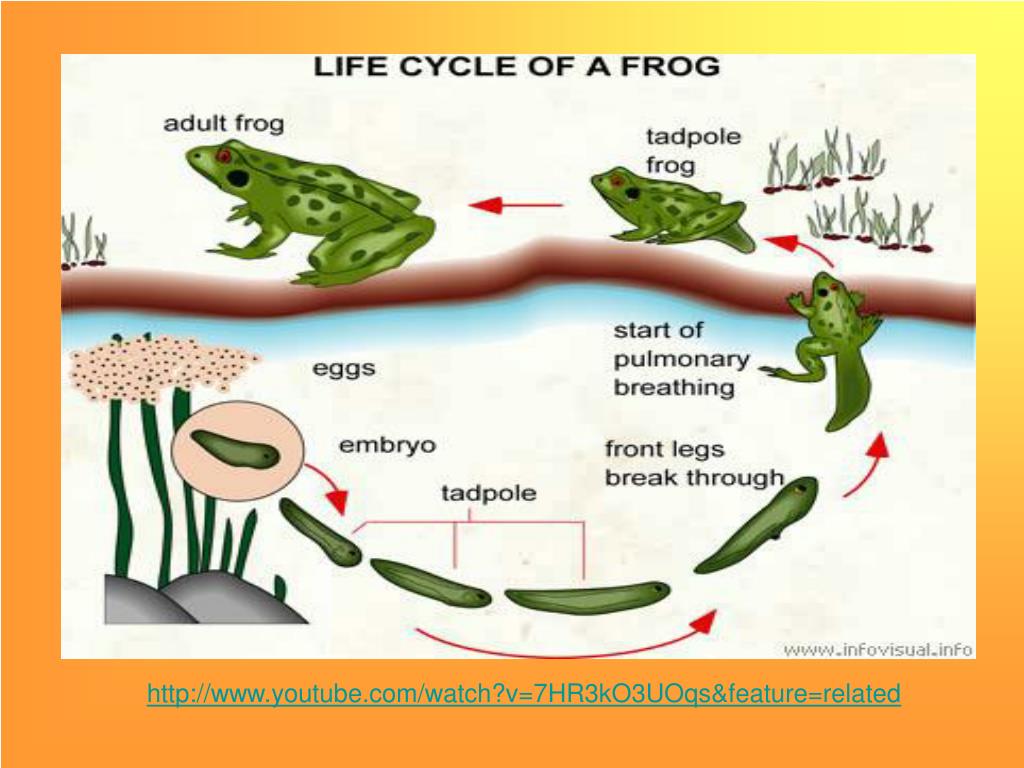 If you have our supply bag, there is a cup included or you can use your own cup. Use the cup to remove all but around 3 inches of water from the habitat. Then, scoop the tadpole into the cup with some water (about ½ cup full is OK) and set in a safe place. Pour out the rest of the dirty water from the habitat and rinse the habitat in the sink with warm water. Do not use soap or other cleaners in your habitat. Now refill the habitat with warm (not hot) tap water and add the water treatment solution. Let this treated water sit for 2 hours so it becomes the same temperature as the water in the cup with the tadpole in it. After 2 hours, you can pour the entire contents of the cup into the habitat.
If you have our supply bag, there is a cup included or you can use your own cup. Use the cup to remove all but around 3 inches of water from the habitat. Then, scoop the tadpole into the cup with some water (about ½ cup full is OK) and set in a safe place. Pour out the rest of the dirty water from the habitat and rinse the habitat in the sink with warm water. Do not use soap or other cleaners in your habitat. Now refill the habitat with warm (not hot) tap water and add the water treatment solution. Let this treated water sit for 2 hours so it becomes the same temperature as the water in the cup with the tadpole in it. After 2 hours, you can pour the entire contents of the cup into the habitat.
Important: Never use soap or other cleaners in your habitat. The residue can hurt tadpoles and frogs.
ADDING A ROCK OR BRANCH: When you see the tadpole has developed front legs as well as back legs, you will need to provide a way for it to rest outside of the water on dry ‘land’.
Without a resting spot it is forced to swim continually and it can drown now that it has developed lungs. Use the cup to remove all but about 3 inches of water from your habitat. Find either a rock or floating piece of wood that is large enough that it will stick out of the water and be dry on top. Rinse any excess dirt off of the rock or wood before placing in the habitat. Place the rock or wood so the new froglet has easy access to the dry ‘land’ and make sure the sides are not too high or steep for it to climb up on it. The rock or wood can take up as much as half of the habitat space. The other half should be water.
Caring for Your Frog
FEEDING: Sometimes a frog won’t eat for the first week so don’t worry. Frogs eat living insects and worms. They will not eat dead insects because they hunt based on movement of the prey. You can feed your frog crickets, mealworms or earthworms from the pet shop. Or you can collect your own insects like moths, sowbugs, flies or caterpillars. Only feed 1 or 2 at a time on the dry ‘land’ part of the habitat. Remove any dead insects from the habitat before adding more.
Only feed 1 or 2 at a time on the dry ‘land’ part of the habitat. Remove any dead insects from the habitat before adding more.
CLEARING THE HABITAT: Frogs need clean water just like the tadpole did. Continue to do a water change at least once a week like you did when it was a tadpole. When your frog is too big to stay in the cup during water changes, you will want to find an escape-proof small container for it to stay in during the water change.
ABOUT YOUR LEOPARD FROG: Frogs can live 5 years or more in captivity. An adult leopard frog can grow to 4 to 6 inches, but it takes years for them to get that big. Female leopard frogs are usually slightly larger than males, but it’s not really possible to tell which you have. Leopard frogs will not mate in your habitat because they do not mate until they are 5 years old and like special conditions not offered in your habitat.
CAN I PLAY WITH THE TADPOLE OR FROG?
No. A tadpole’s skin is fragile and is easily damaged if handled improperly. A frog is delicate and may escape or be injured during handling.
A frog is delicate and may escape or be injured during handling.
WHAT IF I CAN NO LONGER CARE FOR MY FROG?
Please do not release the frog outside. Your frog may not know how to survive in the wild because it has not learned to hunt on its own. Some suggestions: find a friend or neighbor who would like a pet frog, or donate it to a school for a wildlife display, or give it to a local pet shop who can possibly find it a home.
Frog Growing Kit Facts:
Q: Do you give a Guarantee?
A: Yes. We guarantee your tadpole will arrive alive. After it arrives we can no longer guarantee it as most problems with tadpoles come from improper water care.
Q: How long before I get my tadpole?
A: If your kit came with a certificate for a tadpole, mail, fax, or email it to us per the instructions. Allow 2 weeks for it to arrive.
Q: Can I order tadpoles during the winter?
A: We ship tadpoles year-round but only order your tadpole if it is above 40 degrees in your area.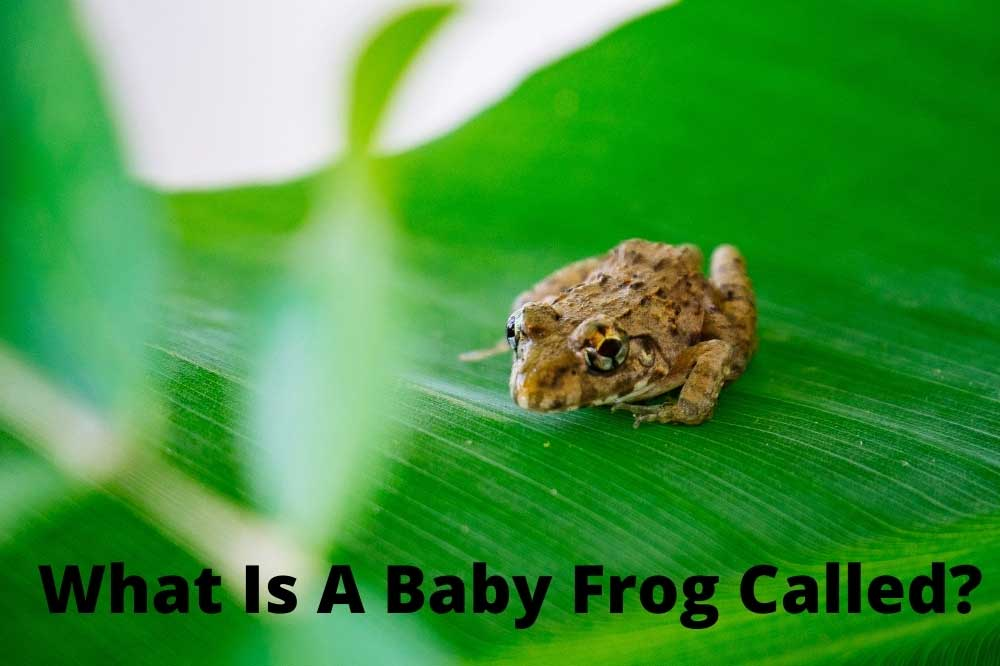
Q: How many tadpoles can I put in my habitat?
A: Only 1 tadpole per gallon of water.
Q: My tadpole isn’t moving. Is it dead?
A: Probably not, it can take up to a day before the tadpole explores the habitat.
Q: How long does it take the tadpole to become a frog?
A: Approximately 12-16 weeks with weekly complete water changes.
Q: My tadpoles were doing fine and then next day they are dead. What happened?
A: This is usually a water problem. If you accidentally introduced hand lotion or soap into the habitat during a water change, or forgot to add the water treatment to tap water, or overfed and have dirty water for too long then it will harm your tadpoles.
Q: Do I need a heater, filter or gravel in my habitat?
A: No – room temperature water is best, filters may take away the tadpole’s food and gravel makes water changes very hard and isn’t necessary.
Q: Can I put a new tadpole in my habitat with a frog?
A: No, the frog may consider the tadpole to be food.
Q: What if I run out of tadpole food or water treatment solution?
A: Your local pet shop carries these – tadpoles like goldfish food and you can use any water treatment made for fish tanks that removes chlorine and neutralizes metals.
How to Care for Baby Frogs
By Jacob Reis | Updated September 26, 2017Baby frogs require special care, especially in feeding, to survive and live to adulthood. As amphibians, they also require a habitat relative to their natural habitat to thrive.
Things You'll Need
A glass aquarium
A piece of plexiglass cut and sanded
Nontoxic aquarium sealant
Aquarium gravel
Substrate like potting soil or sand
Distilled water
Plants, logs or other hides
A water dish for dry-environment species
Crickets, worms and other insects
Reptile diet powder for insects
Building the Habitat
Step 1: Choose an Aquarium
Many toads and some frogs live in dry, arid environments and do not do well in aquatic conditions. Others require much more water. Consult a herpetologist -- a reptile scientist -- if you aren't sure about your frog. Match the frog's enclosure as closely as possible to its natural habitat and consider the adult size of your frog before deciding. Most species do well in 20-gallon aquarium tanks. Make sure to choose a secure-fitting lid as well. Baby frogs are adept escape artists.
Others require much more water. Consult a herpetologist -- a reptile scientist -- if you aren't sure about your frog. Match the frog's enclosure as closely as possible to its natural habitat and consider the adult size of your frog before deciding. Most species do well in 20-gallon aquarium tanks. Make sure to choose a secure-fitting lid as well. Baby frogs are adept escape artists.
Step 2: Add Substrate
Many semiaquatic species, like the firebellied toad, are happiest in an enclosure that is half dry land and half water. Cut a piece of plexiglass to the width of the tank and to a height equal to the length of a full-grown frog of whichever species you will own, plus one inch. Sand the top edge until it's rough but not sharp -- your frogs will climb over this from water onto dry land. Secure this plexiglass in the middle bottom of the tank with aquarium sealant. You should now have two equal sides with a piece of plexiglass between them.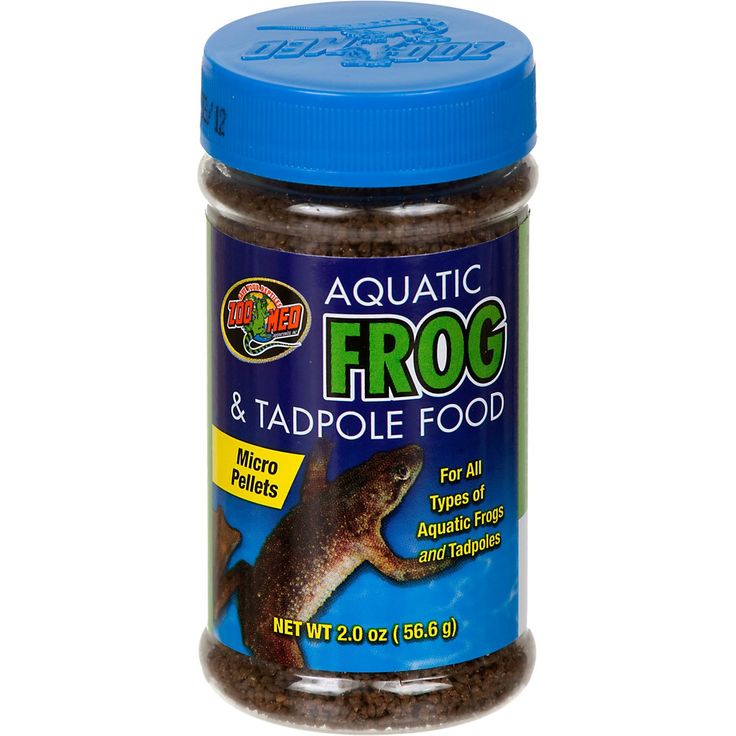 Layer both sides with just enough aquarium gravel to cover the glass, then build one side of the tank up with another type of substrate like sand or potting soil right to the level of the plexiglass.
Layer both sides with just enough aquarium gravel to cover the glass, then build one side of the tank up with another type of substrate like sand or potting soil right to the level of the plexiglass.
Step 3: Add Water
Use distilled water to fill the other side of the enclosure. If your frog is from a warm or tropical environment, a water heater may be necessary. Getting the temperature right is especially important for baby frogs. Use a low-power aquarium filter to keep the water clean. If you're providing a dry environment for arid-habitat species, provide a water dish at least large enough the frog to submerge itself.
Step 4: Add Plants and Hides
Frogs require places to hide. Using a hollowed-out half-log on the dry side of their tank lets them get under cover when they are tired or feeling threatened. Adding real or artificial plants to the enclosure also helps to mimic frogs' natural environment. These plants and hides also retain moisture, which will help keep humidity high for species that require it. Use a stick or long piece of bark in the water, leaning onto the plexiglass, to provide your frog with another way from water to land.
These plants and hides also retain moisture, which will help keep humidity high for species that require it. Use a stick or long piece of bark in the water, leaning onto the plexiglass, to provide your frog with another way from water to land.
Frogs receive all their necessary vitamin D3 from their diet and as such do not require full-spectrum reptile lighting. Normal lights will work fine for them.
Caring Specifically for Baby Frogs
Once froglets have absorbed their tadpole tails and become frogs, their care is very similar to that of adult frogs. The only difference is in feeding. Growing frogs require more regular feeding than adults. Feed your frogs daily, usually at dawn or in the evening, depending on the species' natural schedule.
As carnivores, frogs must be fed insects. Crickets are ideal for baby frogs, as pet stores carry them in a variety of sizes. Use insects that are not longer than your frog's mouth is wide. This will prevent choking and ensure that the insects don't harm your frog. Remove uneaten food at dawn if fed in the evening, and in the evening if fed at dawn. As your frogs grow, they can start to take larger insects, like earthworms.
This will prevent choking and ensure that the insects don't harm your frog. Remove uneaten food at dawn if fed in the evening, and in the evening if fed at dawn. As your frogs grow, they can start to take larger insects, like earthworms.
Sprinkle crickets with reptile diet powder two or three times per week to ensure that your frog gets the vitamins and minerals he needs.
Do not touch or hold your baby frog if not absolutely necessary. Not only are baby frogs' skeletal structures fragile, but many frogs absorb chemicals through their skin and may pick up anything you may have on your hands. Baby frogs are especially sensitive to outside chemicals. Observe your baby frog's behavior from outside of his enclosure instead.
Warnings
Do not house baby frogs with larger frogs. A small-enough baby can become a meal for your larger critters.
Once upon a time there was a frog…
It was in a fairy tale that a frog had to be kissed so that it would turn into a beautiful princess. Modern frogs - no matter how much they are kissed - are in no hurry to turn into beautiful girls, although they are so interesting and amazing as amphibians that they can be forgiven for this small flaw. In the end, there are many beautiful women, but frogs with spurs on their legs - still look!
Modern frogs - no matter how much they are kissed - are in no hurry to turn into beautiful girls, although they are so interesting and amazing as amphibians that they can be forgiven for this small flaw. In the end, there are many beautiful women, but frogs with spurs on their legs - still look!
It is because of this peculiarity that amphibians are called clawed. Amphibians need large, curved spurs for protection - this small (no more than 15 cm), cute frog is able to give a very real rebuff if it feels in danger. Random, chaotic swinging of the hind legs with clawed spurs will intimidate anyone - after all, few people like to get hit with such a paw on delicate skin. Living in nature in South Africa, the frog is not at all land-based - it can briefly get out on land, and even from the aquarium in which it is kept at home, it often migrates (if it is not closed with a lid on top), however, it is not possible to live on earth can. The skin of an amphibian instantly dries up, and in such conditions the frog is threatened with certain death. nine0003
nine0003
In aquariums, the clawed frog gets along well with fish. One nuance: all fish must be no smaller than it in size - unfortunately, this amphibian does not feel any reverence towards its neighbors in a communal apartment, and will gladly bite on small fish, even if five minutes ago they fed gloriously on dry gammarus together. Therefore, in an aquarium where fish are found in the vicinity of a frog, an inventory should be carried out regularly, and fish ready for breeding should be resettled in order to avoid eating eggs and fry by amphibians. nine0003
However, these gluttons willingly eat live food (insect larvae, medium-sized bloodworms, tubifex, pieces of fish, earthworms) quite easily learn to eat granulated food, which makes feeding easier for the frog owner. Moreover, the true female essence of an amphibian is also manifested in the way she eats. Frogs take food and hold it (simply help push it into their mouths) with their front legs. With enough imagination, you can see how the enchanted princess eats at a dinner party, gently sending pieces of a worm or fish into her mouth. nine0003
nine0003
Even externally, the frogs are quite decorative. In addition to natural brown-green forms, there is a fairly common white - albino frog. The snow queen among frogs looks like a white and pink cloud floating in the water column in an aquarium. However, female clawed frogs are larger than males, so that the snow cloud formed from the female is much more massive. These amphibians are not sissies, they do not require elevated temperatures (over 20 degrees Celsius) in the aquarium, moreover, they are unpleasant for them. And temperature fluctuation from low (about 18 degrees) to high (about 22 degrees) is a signal for reproduction. nine0003
If the aquarium contains a pair of frogs, they will become parents after a while. However, this is a very conditional definition for amphibians that do not care about their offspring. Frogs spawn - with separate eggs or ribbons (if the temperature is lowered), fixing it on any objects in the aquarium - on algae, oxygen supply hoses, glass and driftwood decorating the bottom. Caviar develops well only at elevated temperatures (over 25 degrees Celsius) and sufficiently strong aeration. As soon as the tadpoles begin to breathe atmospheric air (this will be noticeable by its bubbles next to the tadpole) and feed on their own (approximately on the fifth day), additional oxygen saturation of the water can be stopped. They feed babies either with nettles - dry grass, which is steamed with boiling water, and the filtered broth is poured into the water where tadpoles live. Infant formula or powdered milk is also used. This is an interesting business - to feed children, even frogs! Frogs at any age are gluttons, and here it is important to control yourself and not overfeed the kids. It will not be good for them, and water from excess food begins to deteriorate instantly. However, in the final stage of metamorphosis, the tadpoles are lethargic and almost do not eat. In the process of turning tadpoles into frogs, it is important that the water level is not high - no more than 10 cm.
Caviar develops well only at elevated temperatures (over 25 degrees Celsius) and sufficiently strong aeration. As soon as the tadpoles begin to breathe atmospheric air (this will be noticeable by its bubbles next to the tadpole) and feed on their own (approximately on the fifth day), additional oxygen saturation of the water can be stopped. They feed babies either with nettles - dry grass, which is steamed with boiling water, and the filtered broth is poured into the water where tadpoles live. Infant formula or powdered milk is also used. This is an interesting business - to feed children, even frogs! Frogs at any age are gluttons, and here it is important to control yourself and not overfeed the kids. It will not be good for them, and water from excess food begins to deteriorate instantly. However, in the final stage of metamorphosis, the tadpoles are lethargic and almost do not eat. In the process of turning tadpoles into frogs, it is important that the water level is not high - no more than 10 cm. Yes, and excess lighting in the aquarium is useless. nine0003
Yes, and excess lighting in the aquarium is useless. nine0003
After the transformation of a tadpole into a frog, the appetite of young amphibians is monstrous. They need a lot of good, complete, protein food so that the skeleton develops correctly and all organs work as they should. At this time, teenagers are fed like adult frogs, alternating bloodworms, pieces of fish or beef liver and tubifex.
If amphibians are kept without fish, then a shallow aquarium (about 60 liters per couple) can be selected for them, the water level in which will be equal to twice the height of a frog. A couple of small stones that do not look out of the water and unpretentious plants: elodea, cryptocoryne. However, adult frogs will still eat them. nine0003
It doesn't matter that a clawed frog will never make a princess, watching these cheerful, good-natured creatures eat or hang like snow-white clouds in their aquarium is a pleasure. Want to try?
Sincerely, Elena.
How to raise a frog at home
Have you ever raised a frog? But most scientists began their great journey precisely with the cultivation of frogs, noticing the growth of tadpoles and their behavior. Let's be scientists together and raise our frogs too. nine0003
What do you need? Remember where you have a small body of water nearby - a pond, a huge puddle, or a tributary near a river. We go there and look for frog eggs near the shore with grass. What it looks like is shown in the photo.
Scoop some caviar into a glass jar, along with water, and take it all home!
At home, pour the water with caviar into a large jar, but best of all into an aquarium. We cover our reservoir with a lid with holes or a plank and set it away from the sun. Make sure that the water does not evaporate and add some fresh water from the reservoir where the caviar was taken. You can also insist on tap water yourself, but not less than three days. nine0003
After about a week and a half, frog eggs will look like tadpoles, as in the photo below. The higher the temperature, the faster they can "hatch".
The higher the temperature, the faster they can "hatch".
Such freaks will at first seem to hang on their tummy and won't move at all. At this time, they feed on the remnants of nutrients that were in the yolk sac.
Slightly grown tadpoles scrape off the algae cover that grows on the walls of the reservoir and the plants in it, therefore, their mouths seem to be made of two scrapers. nine0003
Tadpoles can breathe at first only with external gills, since gill slits are not yet formed.
After another one or two weeks, our tadpoles have those same gill slits and internal gills, thanks to which they will begin to breathe fully. Still, in about three weeks, legs will appear, and our tadpole will no longer look like a defenseless creature.
Here we have almost grown a frog, though still with a tail, but soon it will resolve.
By now, you should have prepared a small island for the frogs to dry off, as adult frogs spend most of their time on dry land. Such a raft can be made from a piece of foam. nine0003
Such a raft can be made from a piece of foam. nine0003
Now let's move on to feeding! Frogs must be fed, it is better if they are algae and other plants from a pond or river. But in the absence of such nearby, you can start feeding with leaves, but not fresh, but dried and ground into powder. You can also add some dry yeast.
You can put a leaf of cabbage, it will get a little wet, the frogs will start sucking on the leaf. Some crumble bread, kids will also not refuse such a treat. In general, they will be happy with any plants. Don't expect the frogs to eat right away, they can wait until the food gets wet and starts to rot a little. nine0003
Make sure that the water is always fresh, otherwise the whole house will start to smell bad, and real scientists do not need to breed unsanitary conditions!
On land, the tadpole's tail falls off, though no matter how it falls off, it dissolves and disappears.
Such a frog can be safely released into the pond where you took the caviar.